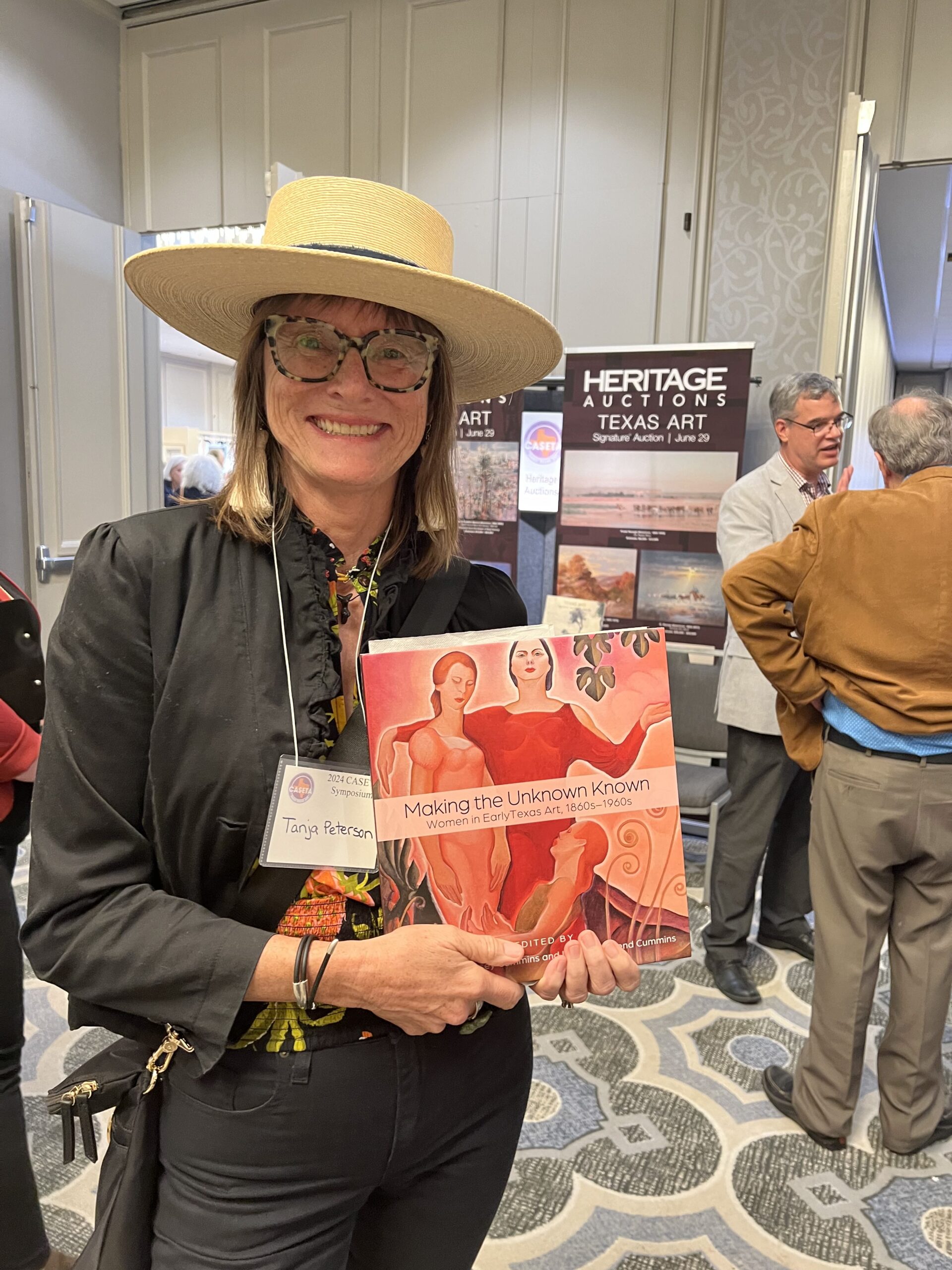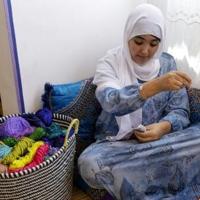Art history scholars and purveyors shined a light on Texas’ long overlooked women artists at the Center for the Advancement and Study of Early Texas Art (CASETA) Symposium and Texas Art Fair, an annual convergence held in Houston this summer.
During the three-day convention and art fair at at the Doubletree by Hilton – Greenway Plaza hotel, collectors, dealers and educators — from more than 30 Texas cities and towns as well as Boca Raton, New Orleans, Kansas City and Albuquerque — shared their knowledge of Texas artists spanning the 19th century into the 1980s. Participants included experts from the Amon Carter Museum of American Art, Bayou Bend Collection and Gardens, Dallas Museum of Art, The Grace Museum, Longview Museum of Fine Art, The Menil Collection, The Museum of Fine Arts, Houston, National Cowboy & Western Heritage Museum, The Nave Museum (Victoria), Ogden Museum of Southern Art (New Orleans), Panhandle-Plains Historical Museum, San Antonio Museum of Art, the San Angelo Museum of Fine Arts, Sid Richardson Museum (Fort Worth) and the Tyler Museum of Art.
Underwritten by Heritage Auctions, John L. Nau III and Still Water Foundation, with Glasstire and PaperCity stepping up as media sponsors, the symposium featured illuminating lectures that covered topics such as rediscovered women artists of the past century, the contributions of an artist and educator from Texas Southern University (Dr. John Biggers) and underknown Latino and Tejano talents.
A focal point of the research conference was a celebration of the recently published groundbreaking volume, Making the Unknown Known: Women in Early Texas Art, 1860s-1960s.
Thomas Lemmons, editor in chief of Texas A&M University Press, declared the book “one of the most ambitious volumes ever written about the visual arts in Texas.” The 20 chapter, lavishly illustrated tome depicts the uphill battles women artists in Texas faced from throughout the late 1800s all the way up into the 20th century.

A Celebration of Texas Women Artists
Conference chair Bonnie Campbell says after a year of planning the symposium, celebrating the publication of the book was the highlight.
“Knowing the five years of scholarship and dedication that had led to that moment, it was heartwarming to mark the occasion with remarks and a champagne toast, and then see 11 of the authors signing the books for nearly an hour — as fast as their pens would fly,” Campbell tells PaperCity. “Well-earned smiles of pride over the Texas-sized accomplishment were everywhere.”
Sarah Beth Wilson, co-author of the volume and exhibitions manager at The Menil Collection, found herself thrilled to be a part of CASETA and to have a role in recording these important pieces of herstory.
“Such a collaboration underscores the importance of an organization like CASETA and the impassioned supporters of the organization that have made the preservation and study of Texas art history their mission,” Wilson says.
While addressing attendees at the conference, the night’s honoree and book co-author Michael Grauer pointed out that the significant contributions women made to early Texas art went unnoticed for decades. He hopes this volume will set the record straight and allow for further scholarship.

The cover image of the book — Ruth Uhler’s “Growth,” 1934, an oil painting of three women — survives as a relic of this neglect. Grauer notes that Ruth Uhler burned many of her works in a fit of rage after her artistry went ignored for years. Now, her works are exceptionally rare and admired.
By chance, transcendentalist Houston painter Leila McConnell preserved this cover painting for decades in her attic. McConnell’s work also appears in the book and was on display at the art fair at Foltz Fine Art’s booth.
Houston gallerist Sarah Foltz praised the range of other well-known Texas artists who were highlighted in the fair’s booths, from Kathleen Blackshear to Kermit Oliver. Artists with Texas connections — including Thomas Hart Benton whose lithograph West Texas, 1952 sold during the art fair — also found their work highly coveted.
“There was much enthusiasm from the attendees for both the lecture topics and dealers’ presentations at the fair,” Foltz says.
This enthusiasm translated into brisk sales at the CASETA Fair.
“Dealers reported sales of works by a large number of Texas artists including those with Houston connections — John Biggers, Leila McConnell, William Steen, David Adickes, Dorothy Hood, Emma Richardson Cherry, Kathleen Blackshear, Robert Weimerskirch and Beulah Ayars.” Campbell notes. “Many other well-known Texas artists found new homes including works by Jerry Bywaters, Julian Onderdonk, Charles Bowling, Florence McClung, Edward Eisenlohr, Fred Darge and Nannie Huddle.”
Learn about groundbreaking female artists in early Texas art and how to buy the book through Texas A&M University Press here. Find information on CASETA membership here.
This post was originally published on this site be sure to check out more of their content








